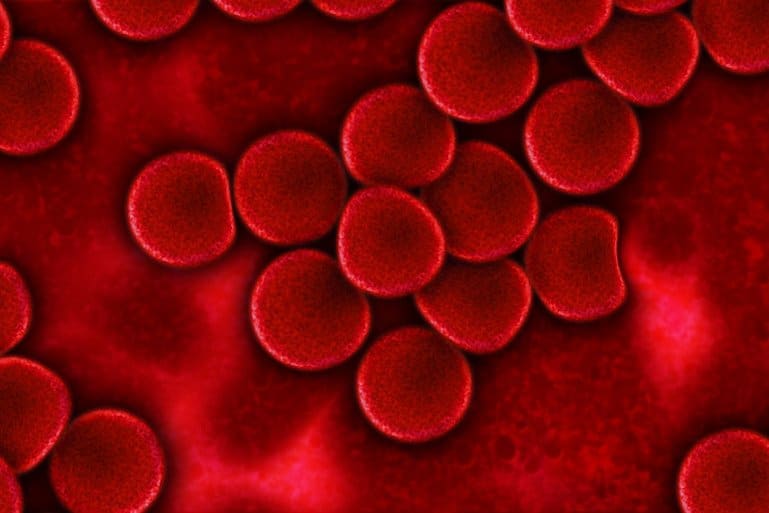Summary: Older mice did not significantly benefit from the blood of younger mice when it came to extending lifespan. However, younger mice who were exposed to the blood of older mice had a significant reduction in lifespan.
Source: Mary Ann Liebert Inc
A new study in which young and old mice were surgically joined such that they shared blood circulation for three months showed that the old mice did not significantly benefit in terms of lifespan.
In contrast, the young mice that were exposed to blood from old animals had significantly decreased lifespan compared to mice that shared blood with other young mice.
The study is published in the peer-reviewed journal Rejuvenation Research.
Heterochronic parabiosis is a research tool used to assess the effect of organs and of blood-borne factors on young and old animals. Less controlled than direct blood exchange, parabiosis is a model of blood sharing between two surgically connected animals.
Iryna Pishel, from Kyiv National Taras Shevchenko University and Bienta Ltd, in Kyiv, Ukraine, and coauthors used heterochronic parabiosis between young and old mice and the isochronic controls for three months.
They then disconnected the animals and studied the effects of being joined on the blood plasma and animal lifespan.
“The most robust and interesting result of this study is the fact of a significant decrease in the lifespan of young mice from heterochronic parabiotic pairs,” state the investigators.
“These data support our assumption that old blood contains factors capable of inducing aging in young animals. Finding and selective suppression of aging factor production in the organism could be the key research field for life extension,” they conclude.
Editor-in-Chief Irina Conboy, PhD, Professor, College of Engineering, University of California, Berkeley says “This work clarifies the question whether the young blood or old blood control longevity, which has been debated (Nature 2005, Conboy, et. al). Are there lasting effects of heterochronic parabiosis and if so, is it a rejuvenation or aging?

“The work by the Pishel group established that the lifespan of the old mice does not increase after being parabiosed to young mice. In contrast, the young animals that were joined with the old mice suffer a shortened lifespan, even after being disconnected.
“This discovery is important in establishing the accurate direction for clinical anti-aging approaches and in providing key scientific evidence against the potency of the young blood factors in an aged organism.
“This work neatly follows the previously published by this group report that infusions of young blood plasma into mice, does not increase their lifespan (Shytikov, Rejuvenation Research)”
On a very important note, Professor Pishel conducted these seminal studies as the Head of the Department at Kyiv National Taras Shevchenko University, yet composed the paper as a refugee, from data collected before the outbreak of war. Such important studies were interrupted by the war, and we hope that they will soon continue and yield more breakthroughs.
About this longevity research news
Author: Kathryn Ruehle
Source: Mary Ann Liebert Inc
Contact: Kathryn Ruehle – Mary Ann Liebert Inc
Image: The image is in the public domain
Original Research: Open access.
“Three Month Heterochronic Parabiosis Has a Deleterious Effect on the Lifespan of Young Animals, Without a Positive Effect for Old Animals” by Iryna Pishel et al. Rejuvenation Research
Abstract
Three Month Heterochronic Parabiosis Has a Deleterious Effect on the Lifespan of Young Animals, Without a Positive Effect for Old Animals
Our previous study showed that an exchange of blood between heterochronic parabionts for 3 months did not rejuvenate the immune system of the old partners. Moreover, the young immune system became more aged and began to function according to the “old” principle. Does this forced aging affect all systems of the organism in this model?
We checked the levels of corticosterone, testosterone, insulin-like growth factor 1 (IGF-1), insulin, and thyroxine in the blood of heterochronic parabionts, but did not find significant changes compared with age-related controls.
Since numerous data support the possibility of rejuvenation of the brain, muscles, and other tissues using the model of heterochronic parabiosis, as well as opposite data, we planned to assess the overall effect of this long-term blood exchange on the rate of organism aging.
We measured the life span of animals whose blood was exchanged for 3 months and then were disconnected. Median and maximum life expectancy decreased in young heterochronic parabionts compared with the isochronic control.
Old heterochronic parabionts showed only a small trend toward an increase in the median life span, but it was not statistically significant, and the maximum life span did not change compared with the isochronic parabionts.
These data support our assumption that old blood contains factors capable of inducing aging in young animals. The mechanism of selective suppression of aging factor production in the organism could be a key research field for life extension.







